| Listing 1 - 10 of 14 | << page >> |
Sort by
|
Book
Abstract | Keywords | Export | Availability | Bookmark
 Loading...
Loading...Choose an application
- Reference Manager
- EndNote
- RefWorks (Direct export to RefWorks)
Group work in architecture --- Architecture, Modern --- Coop Himmelblau.
Book

ISBN: 286653042X 9782866530426 Year: 1987 Publisher: Milan Electa Moniteur
Abstract | Keywords | Export | Availability | Bookmark
 Loading...
Loading...Choose an application
- Reference Manager
- EndNote
- RefWorks (Direct export to RefWorks)
architectuur --- tentoonstellingen --- Architecture --- Nouvel, Jean --- Institut français d'architecture [Paris] --- History --- Exhibitions --- Histoire --- Expositions --- Nouvel, Jean, --- Exhibitions. --- Group work in architecture --- Architecte --- 72.038 --- 72.07 --- Architectuur ; 1970-1986 ; Jean Nouvel --- Jean Nouvel (° 1945, Fumel, Lot-et-Garonne, Fr.) --- Team work in architecture --- Teamwork in architecture --- Architectural practice --- Architectuurgeschiedenis ; 1950 - 2000 --- Architecten. Stedenbouwkundigen A - Z --- Architecture - France - History - 20th century - Exhibitions --- Group work in architecture - France - Exhibitions --- Nouvel, Jean, 1945 --- -Nouvel, Jean, - 1945- - Exhibitions --- architects --- France --- -Nouvel, Jean, - 1945 --- -Architecture
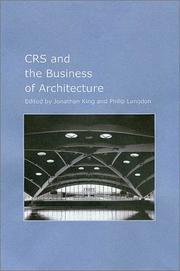
ISBN: 1585449806 9781585449804 1585442062 9781585442065 Year: 2002 Volume: no. 14 Publisher: College Station Texas A & M University Press
Abstract | Keywords | Export | Availability | Bookmark
 Loading...
Loading...Choose an application
- Reference Manager
- EndNote
- RefWorks (Direct export to RefWorks)
"Since the end of the Second World War, few firms have influenced the practice of architecture as much as Caudill Rowlett Scott, or CRS. From its establishment in the 1940s as a three-man operation above a grocery store in College Station, Texas, CRS evolved into a world leader in programming, construction management, school design, and other dimensions of modern architectural practice. By the 1970s, CRS was a master at organizing complicated architectural undertakings and had earned a global reputation for sharing its insights with practitioners worldwide." "This book about CRS will fill an important gap in architectural history. It explores the ways architects of the mid-twentieth century developed methods that allowed professionals to analyze projects systematically rather than relying on the traditional combination of information and intuition. CRS played an important role in the profession's progress by pioneering "programming" to tailor buildings more precisely to the clients' and occupants' needs." "Based on oral histories taken from many leaders and staff members of CRS, the book traces the company's development from its beginnings to its emergence as the largest architecture/engineering firm in the United States by the early 1980s and to its dismemberment in 1994. It focuses mainly on the period from the 1940s to CRS's merger with the South Carolina-based engineering firm Sirrine in 1983"--Jacket.
Architectural practice --- Architectural services marketing --- Architecture --- Group work in architecture. --- Architects --- Group work in architecture --- Art, Architecture & Applied Arts --- Professional employees --- Team work in architecture --- Teamwork in architecture --- Architecture, American --- Architect and client --- Design services --- Sales promotion --- Architectural services --- Architecture, Western (Western countries) --- Building design --- Buildings --- Construction --- Western architecture (Western countries) --- Art --- Building --- Management. --- Decision making. --- Management --- Decision making --- Marketing --- Practice --- Vocational guidance --- Design and construction --- Caudill, Rowlett, Scott --- Caudill Rowlett Scott (Firm) --- CRS --- History. --- Architecture, Primitive
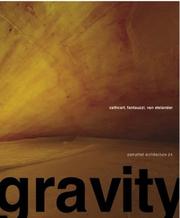
ISBN: 1568984340 9781568984346 Year: 2003 Volume: 25 Publisher: New York Princeton Architectural Press
Abstract | Keywords | Export | Availability | Bookmark
 Loading...
Loading...Choose an application
- Reference Manager
- EndNote
- RefWorks (Direct export to RefWorks)
"For fifteen years, three architects--James Cathcart, Frank Fantauzzi, and Terence van Elslander--from three different cities have held an ongoing collaboration, creating installations and other works of innovation and art about the act of building. Pamphlet Architecture 25: Gravity catalogs a cross section of their many works, from the portable toilets installed in the facade of New York's StoreFront for Art and Architecture to "Big Orbits," a giant solid and a giant void constructed from 4600 shipping palettes. Although strongly conceptual, their work reminds us that a primary function of architecture is to engage the public."--PUBLISHER.
Communication in architectural design --- Group work in architecture --- Conceptual art --- 72.01 --- 72.049 --- Art, Conceptual --- Concept art --- Language art (Fine arts) --- Possible art --- Post-object art --- Art, Modern --- Performance art --- Earthworks (Art) --- Sky art --- Team work in architecture --- Teamwork in architecture --- Architectural practice --- Architecture --- Architectural design --- Influence --- Architectuur ; theorie, filosofie, esthetica --- Architectuur ; verschillende onderwerpen --- Communication en design architectural --- Art conceptuel --- Travail en équipe --- Communication in architectural design - United States --- Group work in architecture - United States --- Conceptual art - Influence --- Communication en design architectural - États-Unis --- Architecture - Travail en équipe - États-Unis --- Art conceptuel - Influence


ISBN: 8495273764 Year: 2004 Publisher: Barcelona Actar
Abstract | Keywords | Export | Availability | Bookmark
 Loading...
Loading...Choose an application
- Reference Manager
- EndNote
- RefWorks (Direct export to RefWorks)
The second issue of Verb Matters takes a look at the formal and material possibilities within current construction methods. Our starting point is the present context of the information era, typified by extensive data processing, global networking and an increasingly blurred distinction between natural matter and artificial technology. First, Verb Matters reflects the actual result of the more sophisticated ideas applied to the shaping of buildings. Next, it attempts to address the growing possibilities of current technology: a living, built, artificial matter that processes information and interacts with natural beings. Having arrived at the limits of the foreseeable, we return to the contemporary world with a greater sense of what is possible. What can we really build? That's the main aspect of this survey.
Architectural design. --- Space (Architecture) --- Building materials. --- Communication in architectural design. --- Group work in architecture. --- Architecture --- Computer-aided design. --- 72.036 --- 72.037 --- 004 --- Twintigste eeuw (architectuur) --- 20ste eeuw (architectuur) --- Eenentwintigste eeuw (architectuur) --- 21ste eeuw (architectuur) --- Informatietechnologie --- Informatiesnelweg --- Moderne bouwkunst. Architectuur van de 20e eeuw --- Space (Architecture). --- 72.036 Moderne bouwkunst. Architectuur van de 20e eeuw --- 72.039 --- Architectuur en digitalisering --- Architectuurgeschiedenis ; 2000 - 2050
Multi
ISBN: 9781107130524 9781316418161 9781107571518 1316418162 9781108216111 1108216110 1107130522 1107571510 Year: 2018 Publisher: Cambridge Cambridge University Press
Abstract | Keywords | Export | Availability | Bookmark
 Loading...
Loading...Choose an application
- Reference Manager
- EndNote
- RefWorks (Direct export to RefWorks)
Villa Madama, Raphael's late masterwork of architecture, landscape, and decoration for the Medici popes, is a paradigm of the Renaissance villa. The creation of this important, unfinished complex provides a remarkable case study for the nature of architectural invention. Drawing on little known poetry describing the villa while it was on the drawing board, as well as ground plans, letters, and antiquities once installed there, Yvonne Elet reveals the design process to have been a dynamic, collaborative effort involving humanists as well as architects. She explores design as a self-reflexive process, and the dialectic of text and architectural form, illuminating the relation of word and image in Renaissance architectural practice. Her revisionist account of architectural design as a process engaging different systems of knowledge, visual and verbal, has important implications for the relation of architecture and language, meaning in architecture, and the translation of idea into form.
Renaissance --- Villa Madama [Rome] --- History of Italy --- humanism --- Architecture --- influence --- Raphael --- Sperulo, Francesco --- anno 1400-1499 --- anno 1500-1599 --- Rome --- Architecture, Renaissance --- Humanism in architecture --- Architectural practice --- Group work in architecture --- HISTORY / Renaissance. --- History --- Sperulo, Francesco, --- Influence. --- Criticism and interpretation. --- Friends and associates. --- Villa Madama (Rome, Italy) --- Rome (Italy) --- Buildings, structures, etc. --- architectuur, Italië --- Raphael,
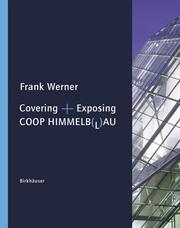
ISBN: 3764360798 9783764360795 Year: 2000 Publisher: Basel Boston berlin : Birkhauser Verlag,
Abstract | Keywords | Export | Availability | Bookmark
 Loading...
Loading...Choose an application
- Reference Manager
- EndNote
- RefWorks (Direct export to RefWorks)
Book DescriptionTo combine architecture and imagination in a fashion as light and variable as clouds was the credo proclaimed by Wolf D. Prix and Helmut Swiczinsky when they founded the practice of Coop Himmelb(l)au in 1968 in Vienna (Himmelblau = heavenly blue). Their radical, iconoclastic and deconstructivist approach to architecture expresses the energy and tension of each site and location in spectacular fashion. Among the projects that established their international reputation are the Groningen Museum pavilion and Dresden UFA Cinema Complex. Their work has also featured in numerous exhibitions and they have represented Austria at the Architecture Biennial in Venice. This monograph is the first publication to present the theoretical and conceptual content of Coop Himmelb(l)au's oeuvre.
Coop Himmelblau. --- Group work in architecture --- Architecture --- Architectural firms --- Architecture contemporaine --- Conception de projet --- Groupe d'architectes --- Transparence --- History --- Coop Himmelblau --- Wolf D. Prix (° 1942, Wenen, Oostenrijk) Helmut Swiczinsky (° 1944, Posen, Polen - groeide op en studeerde in --- Wenen) --- Architectuurtheorie ; stedenbouw ; 1970-2000 ; Coop Himmelb(l)au --- Coop Himmelb(l)au --- Swiczinsky, Helmut --- Prix, Wolf D. --- 72.07 --- Architecten. Stedenbouwkundigen A - Z --- Prix, Wolf D --- Team work in architecture --- Teamwork in architecture --- Architectural practice --- Firms, Architectural --- Architects --- Business enterprises --- Coop Himmelbau --- Coop Himmelblau, Wolf D. Prix, Helmut Swiczinsky + Partner --- Coop Himmelblau, Prix & Swiczinsky Ges. m.b.H. --- Processus de conception --- Group work in architecture - Austria --- Architecture - Austria - History - 20th century --- Architectural firms - Austria --- Déconstructivisme (architecture) --- Déconstructivisme (architecture)
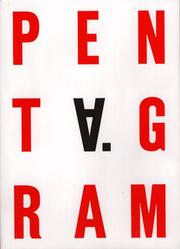
ISBN: 1580930034 9781580930031 Year: 1999 Publisher: New York Monacelli
Abstract | Keywords | Export | Availability | Bookmark
 Loading...
Loading...Choose an application
- Reference Manager
- EndNote
- RefWorks (Direct export to RefWorks)
Fifty case histories in architecture, graphic, and industrial design from the international consultancy Pentagram.
20e eeuw --- 754.1 --- Coca-Cola --- Pentagram --- Swatch --- Tate gallery --- affiches --- grafische vormgeving --- huisstijl --- musea --- ontwerpbureaus --- reclame --- signalisatie --- tentoonstellingsopbouw --- verpakking --- winkelinrichting --- winkelmandje --- grafische vormgeving, reclame, verzameling --- Group work in architecture. --- Sujets, motifs --- Pentagram Design. --- reclamegrafiek --- Apicella Lorenzo --- Biber James --- Bierut Michael --- Brunner Robert --- Gericke Michael --- Grange Kenneth --- Hillman david --- Hinrichs Kit --- Hyland Angus --- McConnell JohN --- Oehler Justus --- Rushworth John --- Scher Paula --- Weil Daniel --- Williams Lowell --- 766.071 PENTAGRAM --- 745.071 PENTAGRAM --- 747.071 PENTAGRAM --- Design --- Group work in art --- Group work in architecture --- Design-histoire --- Design-professions --- History --- Themes, motives --- Pentagram Design --- Pentagram design --- Group work in art. --- Travail de groupe dans l'art --- Themes, motives. --- Histoire --- architectuur --- design --- grafische- en reclamevormgeving --- interieurvormgeving --- productdesign --- productontwikkeling --- twintigste eeuw --- Teamwork in art --- Artistic collaboration --- Team work in architecture --- Teamwork in architecture --- Architectural practice --- Architecture --- History&delete& --- Pentagram Design Partnership --- Pentagram (Firm) --- Creation (Literary, artistic, etc.) --- Design - History - 20th century - Themes, motives
Book
ISBN: 9781945150050 194515005X Year: 2017 Publisher: Cambridge, MA New York Harvard University Graduate School of Design Actar
Abstract | Keywords | Export | Availability | Bookmark
 Loading...
Loading...Choose an application
- Reference Manager
- EndNote
- RefWorks (Direct export to RefWorks)
Often considered utilitarian and unsightly, power plants and other industrial buildings seldom involve architects in their design processes, despite the significant benefits architectural engagement could bring. Based on a three-year investigation of Waste-to-Energy (WtE) facilities undertaken at Harvard University’s Graduate School of Design, Architecture and Waste: A (Re)Planned Obsolescence proposes that designers, owners, and the public reconsider the role of architecture in industrial design. As population densities increase, growing numbers of WtE plants will be needed to cope with mounting volumes of waste, particularly in urban areas. By juxtaposing the extensive WtE industry in Sweden with less-established activities in the northeastern United States, this design-led examination demonstrates that architects’ contributions can be crucial to integrating WtE plants within their context and counteracting negative public perceptions of such facilities. As architects develop hybrid WtE building typologies that unite energy production with new public and institutional programs, remarkable opportunities arise for these facilities to reconnect to, communicate with, and greatly enrich the communal realm.
Architecture, Industrial. --- Architecture, Modern --- Refuse and refuse disposal. --- Architecture --- Industrial buildings --- Recycling (Waste, etc.) --- Refuse as fuel. --- Waste products as fuel. --- Waste disposal sites --- Salvage (Waste, etc.) --- Engineering. --- Interdisciplinary research. --- Group work in architecture. --- Architecture industrielle --- Constructions industrielles --- Recyclage (Déchets, etc.) --- Déchets (Combustible) --- Déchets --- Récupération (Déchets, etc.) --- Ingénierie --- Recherche interdisciplinaire --- Environmental aspects. --- Themes, motives. --- Aspect de l'environnement --- Élimination --- Sites --- Thèmes, motifs --- Travail en équipe --- Bâtiment industriel --- Reconversion de bâtiment --- Reconversion de site --- Pollution --- Recyclage --- Rôle de l'architecte --- Politique énergétique --- Consommation --- Développement durable --- Energie grise --- Energie verte --- Energie renouvelable --- Recyclage (déchets, etc.) --- Récupération (déchets, etc.) --- Aspect environnemental --- Installations --- Aspect environnemental. --- Déchets --- Recyclage (déchets, etc.) --- Récupération (déchets, etc.) --- Élimination --- Architecture, Industrial --- Refuse as fuel --- Waste products as fuel --- Engineering --- Interdisciplinary research --- Group work in architecture --- Environmental aspects --- Themes, motives
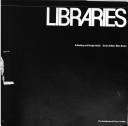
ISBN: 0851397654 9780851397658 Year: 1986 Volume: 1 Publisher: London Architectural press
Abstract | Keywords | Export | Availability | Bookmark
 Loading...
Loading...Choose an application
- Reference Manager
- EndNote
- RefWorks (Direct export to RefWorks)
Library planning and design --- 022 --- 727.8 --- Library architecture --- Architects and patrons --- Communication in architectural design --- Group work in architecture --- #A9901A --- Architectuur ; bibliotheken --- architectuur --- interieurvormgeving --- ontwerp --- bibliotheekinrichting --- bibliotheken --- Team work in architecture --- Teamwork in architecture --- Architectural practice --- Architecture --- Architectural design --- Patrons and architects --- Art patrons --- Bibliotheekgebouwen. Bibliotheekinrichting --- Bibliotheekgebouwen. Gebouwen voor documentatie. Archiefgebouwen. Octrooikantoorgebouwen --- Bibliotheekgebouwen --- Bibliotheken (architectuur) --- Gebouwen voor opleiding en wetenschap ; bibliotheken, archieven, documentatiecentra --- 727.8 Bibliotheekgebouwen. Gebouwen voor documentatie. Archiefgebouwen. Octrooikantoorgebouwen --- 022 Bibliotheekgebouwen. Bibliotheekinrichting
| Listing 1 - 10 of 14 | << page >> |
Sort by
|

 Search
Search Feedback
Feedback About UniCat
About UniCat  Help
Help News
News